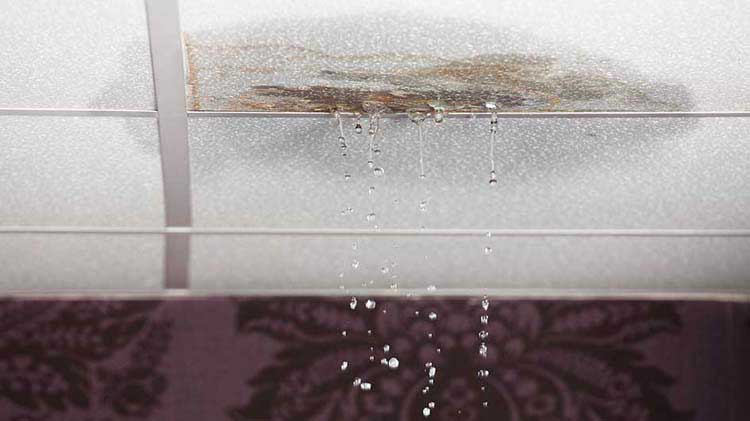Identify the Top Triggers for Water Leakage in Your Home
Identify the Top Triggers for Water Leakage in Your Home
Blog Article
Do you find yourself on the lookout for help around How Fast Water Damage Can Ruin Your Home?

Leaks not just cause waste of water but can likewise trigger unnecessary damage to your home and advertise unwanted organic growth. Unfortunately, water leaks may go unnoticed because most of the pipework in our residence is concealed. By looking and comprehending for daily scenarios that cause leakages, you can secure your residence from future leaks and also unnecessary damages. Today, we will consider 6 leak triggers that might be creating your pipelines to drip.
Elbowing in origins
Many water leaks begin outside your home rather than inside it. If you observe an unexpected decline in water pressure, claim in your tap, require time to head out and also analyze your lawn. You may see damp patches or sinkholes in your lawn, and that may suggest that tree roots are invading water lines causing water to leak out. You can have your plumber look for invasion, especially if you have trees or hedges near your property.
Corroded water supply
This might be the reason of staining or warping on your water pipes. If our plumbing system is old, take into consideration changing the pipes since they are at a greater risk of deterioration than the newer versions.
Faulty Pipeline Joints
The factor at which your pipes link is regularly the weakest link in the waterline. Pipeline joints can wear away in time, causing water leaks. The bulk of pipe joints are not conveniently noticeable. If you have noisy pipes that make ticking or banging sounds, specifically when the warm water is activated, your pipeline joints are possibly under a great deal of pressure. It is a good idea to have your plumber examine your system yearly.
Immediate temperature changes.
Severe temperature changes in our pipelines can trigger them to expand and also contract all of a sudden. This growth and tightening may trigger cracks in the pipelines, especially if the temperature level are below freezing. It would be best if you watched on how your plumbing works. The presence of the previously stated situations often shows a high risk.
Poor Water Connectors
At times, a leak can be caused by loosened hose pipes and pipes that provide your devices. In instance of a water connections leakage, you may observe water running straight from the supply line or pools around your devices.
Blocked Drains
Obstructed drains pipes may be frustrating as well as inconveniencing, but they can sometimes end up creating an overflow leading to break pipes. Maintain removing any kind of materials that may decrease your drains pipes that could clog them to prevent such aggravations.
All the above are reasons for leaks however not all water leaks arise from plumbing leaks; some leakages may come from roofing leaks. All leaks should be fixed right away to stay clear of water damage.
Leakages not only trigger waste of water yet can also trigger unneeded damage to your house and advertise unwanted natural development. By looking as well as understanding for day-to-day circumstances that trigger leakages, you can safeguard your residence from future leaks and also unneeded damage. Today, we will look at six leak causes that might be creating your pipelines to drip.
At times, a leakage can be created by loose pipes and also pipelines that provide your home appliances. In instance of a water connections leak, you may observe water running straight from the supply line or pools around your home appliances.
How To Check For Water Leak In Your Home
How To Check for Leaks
The average household's leaks can account for nearly 10,000 gallons of water wasted every year and ten percent of homes have leaks that waste 90 gallons or more per day. Common types of leaks found in the home are worn toilet flappers, dripping faucets, and other leaking valves. These types of leaks are often easy to fix, requiring only a few tools and hardware that can pay for themselves in water savings. Fixing easily corrected household water leaks can save homeowners about 10 percent on their water bills.
To check for leaks in your home, you first need to determine whether you're wasting water and then identify the source of the leak. Here are some tips for finding leaks:
Take a look at your water usage during a colder month, such as January or February. If a family of four exceeds 12,000 gallons per month, there are serious leaks.
Check your water meter before and after a two-hour period when no water is being used. If the meter changes at all, you probably have a leak.
Identify toilet leaks by placing a drop of food coloring in the toilet tank. If any color shows up in the bowl after 10 minutes, you have a leak. (Be sure to flush immediately after the experiment to avoid staining the tank.)
Examine faucet gaskets and pipe fittings for any water on the outside of the pipe to check for surface leaks.
Undetected water leaks can happen without the home or business owner even realizing. If you suspect a water leak, but not able to find the source. It is time to contact a professional water leak detection service, The Leak Doctor.
How To Find a Water Leak In Your Home
https://www.leakdoctor.com/blog/How-To-Check-For-Water-Leak-In-Your-Home_AE197.html

We were made aware of that write-up on Common Water Leaks In House from an acquaintance on our other web page. Sharing is nice. You just don't know, you might be doing someone a favor. Many thanks for taking the time to read it.
Immediate attention? Call. Report this page